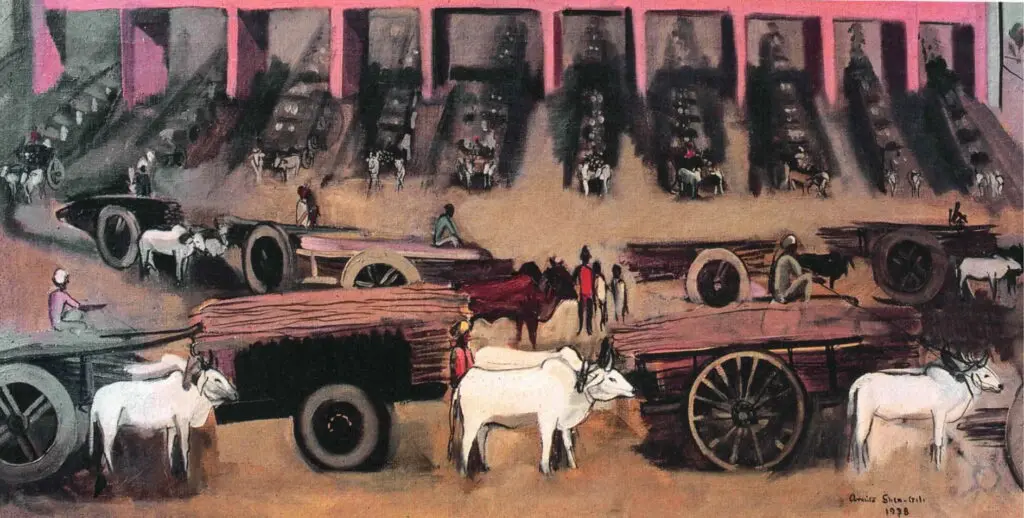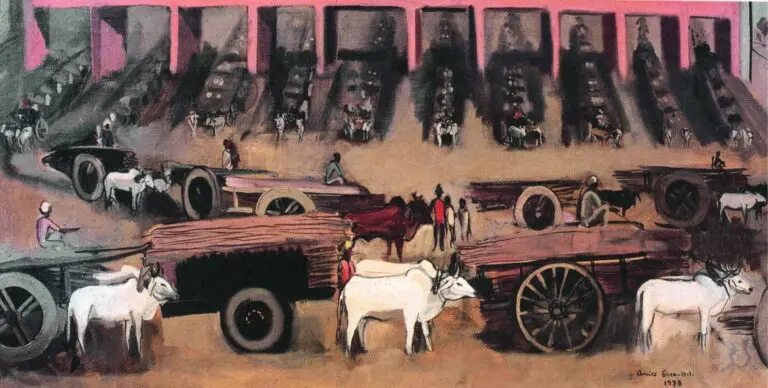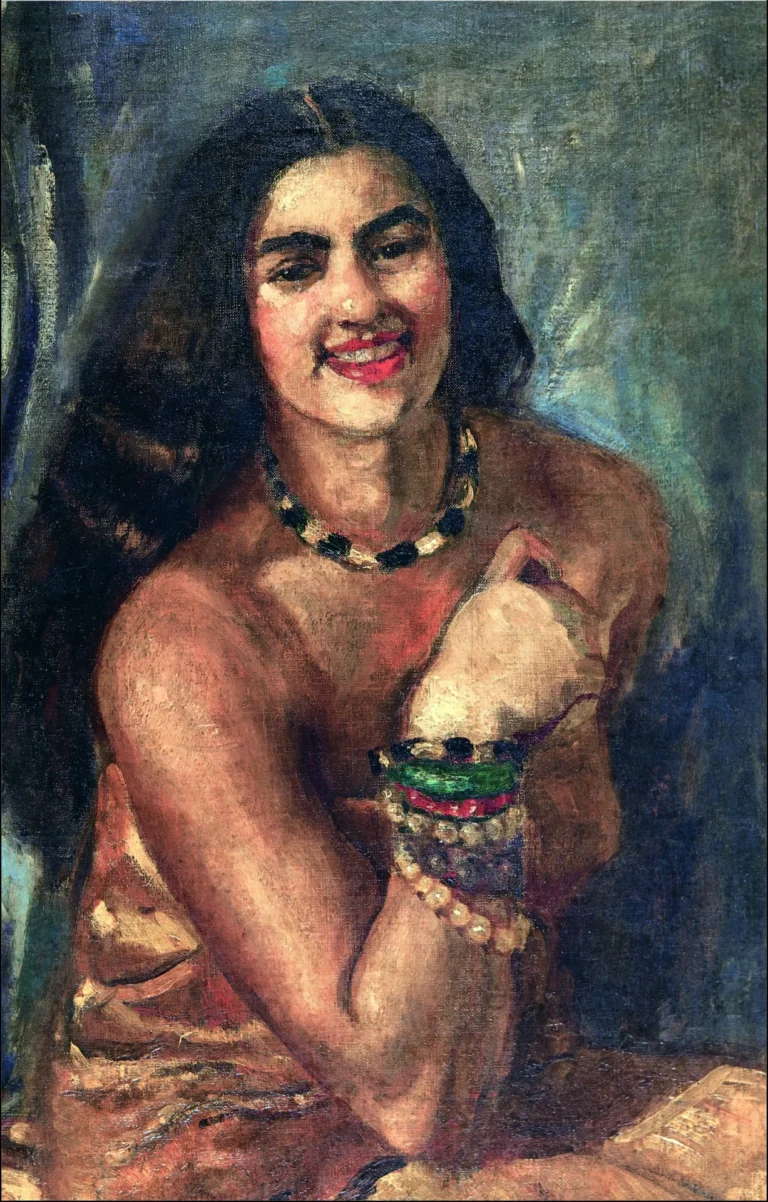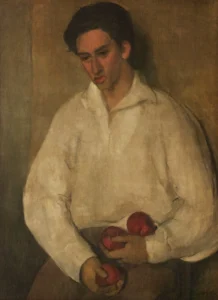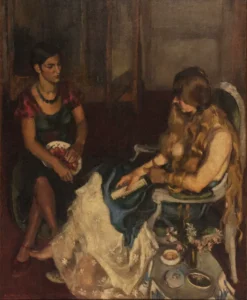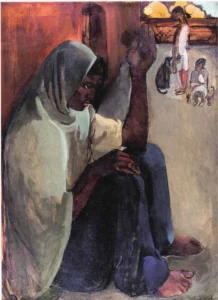Three Bullock Carts (1938)
Three Bullock Carts is a remarkable painting by renowned artist Amrita Sher-Gil, created in 1938. This artwork encapsulates her growing affinity for the marginalized facets of Indian society, particularly rural life. Depicting the humble bullock carts, Sher-Gil infuses the piece with somber tones that illustrate the hardships faced by rural communities. This marked a transformative phase in her art, moving away from European influences to embrace Indian themes more deeply, thus contributing significantly to the narrative of modern Indian art.
Year 1938
About the Artwork
The story behind Three Bullock Carts unfolds in 1938 during Sher-Gil's stay at her father's ancestral home in Saraya, Uttar Pradesh. Marking her transition into a more socially and culturally reflective phase, this piece represents the artist’s keen observations of the daily realities of rural life and the struggles of impoverished communities. Sher-Gil's commitment to authentic representation shines through as she captures the essence of ordinary people and their surroundings, which resonates with the viewer's empathy. This location and timing were pivotal in her artistic transformation, solidifying her legacy as a cultural pioneer in the portrayal of Indian life.
Did You Know
Liked what you see? Add it to your collection.
Enjoyed reading? Share it.
... continued
Subject Matter
Three Bullock Carts reflects Sher-Gil's growing interest in depicting scenes of everyday Indian life, especially those involving rural and impoverished communities. This shift was influenced by her experiences and observations during her stay in Saraya, Gorakhpur, Uttar Pradesh, in 1938.
Period and Location
The painting is dated to 1938, a period when Sher-Gil was staying at her father’s family home in Saraya. This was a time when she began to focus more on Indian themes and subjects, moving away from her earlier work that was more influenced by European art.
Artistic Transition
This work, along with others like 'Red Clay Elephant' and 'Elephants Bathing in a Green Pool,' marks a transition in Sher-Gil's artistic corpus from landscapes, still-lifes, and portraits to more rural and socially conscious themes. These paintings highlight her fascination with the lives of common people, particularly those living in poverty, and her desire to capture their struggles and beauty.
Artistic Style and Impact
Sher-Gil's paintings from this period, including Three Bullock Carts. are characterized by their somber tones and a sense of melancholy, reflecting her observations of the hardships and social strictures faced by the people she depicted. Her work from this era is seen as a fresh and impactful contribution to Indian modern art, influencing generations of artists.




